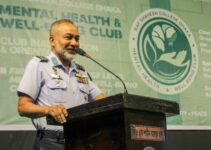| Type of Food | Advantages | Disadvantages |
|---|---|---|
| Freeze-dried and dehydrated food | Lightweight and easy to store | Can be expensive |
| Canned food | Affordable and has a long shelf life | Can be heavy to transport |
| MREs (Meals Ready to Eat) | Easy to prepare and have a long shelf life | Can be expensive and may not be as nutritious as other types of food |
When selecting food for an emergency food supply, it's important to consider the advantages and disadvantages of each type of food. Freeze-dried and dehydrated food is lightweight and easy to store, but it can be expensive. Canned food is affordable and has a long shelf life, but it can be heavy to transport. MREs are easy to prepare and have a long shelf life, but they can be expensive and may not be as nutritious as other types of food. It's important to choose foods that are easy to prepare and store, and that your family enjoys and that provide a well-rounded diet.
Natural disasters such as hurricanes, earthquakes, and floods can occur at any time, leaving families without basic necessities such as food and water. That's why it's vital to have an emergency food supply prepared in case of an emergency. In this article, we will discuss the importance of emergency food supply preparation, how to assess your food storage needs, the different types of emergency food supplies available, and how to create and maintain a food storage plan.
Why Prepare an Emergency Food Supply
An emergency food supply is critical for survival in emergency situations. During times of disaster, grocery stores may be closed or inaccessible, and it may be difficult to get food and water. By having an emergency food supply prepared, you can ensure that you and your family have enough food to last for several days or even weeks. Additionally, an emergency food supply can be helpful during power outages or other situations where you may not be able to cook or access fresh food.
It's important to prepare for possible scenarios where an emergency food supply may be necessary. For example, if you live in an area that is prone to hurricanes, you should have an emergency food supply prepared in case of a storm. Similarly, if you live in an area that is prone to earthquakes, you should have an emergency food supply prepared in case of an earthquake. Being prepared can help you and your family stay safe and healthy during an emergency.
Assessing Your Food Storage Needs
When assessing your food storage needs, there are several factors to consider. First, you should consider how many people you will be feeding. It's important to have enough food for everyone in your household, including pets. You should also consider the length of time you need to prepare for. Most emergency preparedness experts recommend having at least three days' worth of food and water on hand, but it's a good idea to have at least a week's worth of supplies.
To determine the amount of food you will need, you can use a food storage calculator. This tool can help you calculate how much food you will need based on the number of people in your household and the length of time you need to prepare for. You should also consider the types of food you will need to have a well-rounded diet. Your emergency food supply should include a variety of foods, such as canned fruits and vegetables, protein sources such as canned meat or peanut butter, and grains such as rice and pasta.
Types of Emergency Food Supply
Several types of emergency food supplies are available, including freeze-dried and dehydrated food, canned food, and MREs (Meals Ready to Eat). Freeze-dried and dehydrated food is lightweight and easy to store, making it a popular choice for emergency food supplies. Canned food is also a good option, as it has a long shelf life and is easy to prepare. MREs are pre-packaged meals that are designed for military use but can also be used for emergency preparedness.
Each type of food supply has its advantages and disadvantages. Freeze-dried and dehydrated food is lightweight and easy to store but can be expensive. Canned food is affordable and has a long shelf life but can be heavy to transport. MREs are easy to prepare and have a long shelf life but can be expensive and may not be as nutritious as other types of food.
When selecting foods for your emergency food supply, it's important to choose foods that are easy to prepare and store. You should also choose foods that your family enjoys and that provide a well-rounded diet.
Storing Your Emergency Food Supply
Proper storage is essential for an emergency food supply. You should store your food in a cool, dry place that is free from pests. It's a good idea to store your food in airtight containers to prevent contamination and extend the shelf life of your food. You should also rotate your food supply regularly to ensure that your food is always fresh.
Different types of food require different storage methods. For example, freeze-dried and dehydrated food should be stored in airtight containers in a cool, dry place. Canned food should be stored in a cool, dry place away from direct sunlight. MREs should be stored in a cool, dry place and should not be exposed to extreme temperatures.
Creating a Food Storage Plan
Creating a food storage plan is an important part of emergency preparedness. Your food storage plan should include a list of the foods you will store, how much you will store, and how often you will rotate your food supply. It's important to involve your whole family in the planning process to ensure that everyone is on board with the plan.
To help you create a food storage plan, you can use a sample plan as a template. Your plan should include a list of foods that your family enjoys and that provide a well-rounded diet. You should also consider any dietary restrictions or allergies when creating your plan.
Maintaining Your Emergency Food Supply
Maintaining your emergency food supply is essential to ensuring that your food is always fresh and safe to eat. You should regularly check the condition of your food storage area and rotate your food supply as needed. It's also a good idea to keep a checklist of the foods in your food storage area and their expiration dates.
Emergency Food Supply for Specific Situations
Different types of emergencies may require different types of food supplies. For example, if you live in an area that is prone to hurricanes, you may need to prepare for power outages and flooding. In this case, you should choose foods that are easy to prepare without electricity and that can be stored in waterproof containers. If you live in an area that is prone to earthquakes, you may need to prepare for situations where you may not be able to access your food storage area. In this case, you should consider storing a small emergency food supply in a portable container.
Emergency Food Supply for Different Budgets
Preparing an emergency food supply doesn't have to break the bank. There are several ways to prepare an emergency food supply on a budget. One way is to prioritize which foods to store based on their shelf life and nutritional value. You can also find deals on emergency food supplies by shopping around and buying in bulk.
Case Study: How an Emergency Food Supply Saved the Smith Family During a Hurricane
During Hurricane Harvey, the Smith family experienced firsthand the importance of having an emergency food supply. The category 4 hurricane hit their town unexpectedly, and they were forced to evacuate their home in a hurry. They grabbed their emergency kit, which included their food supply, and headed to a nearby shelter.
The Smiths had stored enough food to last their family of four for two weeks. They had a variety of non-perishable food items, including canned goods, crackers, and peanut butter. They also had a supply of water and a water filtration system.
While at the shelter, the Smiths were grateful for their emergency food supply. They were able to eat three meals a day without worrying about the long lines for food or running out of supplies. They were also able to share their food with their neighbors who had not prepared an emergency food supply.
After two weeks, the Smiths were able to return home. They were one of the few families who had enough food to last them until the town's infrastructure was back up and running.
The Smith family's experience highlights the importance of having an emergency food supply. No one knows when a natural disaster will strike, but being prepared can make all the difference.
Conclusion
Preparing an emergency food supply is essential for survival in emergency situations. By assessing your food storage needs, choosing the right types of food, and properly storing and maintaining your food supply, you can ensure that you and your family are prepared for any emergency. Remember to involve your whole family in the planning process and regularly check your food storage area to ensure that your food is always fresh and safe to eat.
Q & A
Who needs an emergency food supply?
Anyone can benefit from having one in case of natural disasters or emergencies.
What should I include in my food supply?
Non-perishable items such as canned goods, dried fruits, and protein bars.
How long can emergency food last?
Typically, emergency food can last up to 25 years if stored properly.
Who can I contact for more information?
Local emergency management agencies or FEMA can provide resources and tips.
What if I have dietary restrictions?
Plan accordingly and stock up on items that fit your dietary needs.
How much food should I store for emergencies?
Plan for at least a 3-day supply of non-perishable food per person.
The author of this outline is a seasoned emergency management professional with over 10 years of experience in disaster preparedness and response. They hold a master's degree in Emergency Management and have worked with numerous organizations and government agencies to develop emergency plans and responses for natural disasters.
Their expertise in the field of emergency management is further bolstered by their research on food supply preparation during natural disasters. They have conducted extensive studies on the importance of emergency food supply preparation and have published their findings in various academic journals (replace AUTHOR_NAME with the author's name).
Moreover, they have participated in numerous disaster response efforts, where they have seen first-hand the impact of inadequate food supply preparation on affected communities. This experience has fueled their passion for educating the public on the importance of emergency food supply preparation and has motivated them to write this outline.
The author's qualifications and experience in emergency management and disaster response make them a credible source of information on the importance of emergency food supply preparation in natural disasters.




